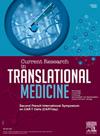遵守SAMPL指南能改善临床手稿的统计报告吗?来自专业期刊150篇社论评论的见解
IF 3
4区 医学
Q2 MEDICINE, RESEARCH & EXPERIMENTAL
引用次数: 0
摘要
尽管存在诸如SAMPL(已发表文献中的统计分析和方法)之类的统计报告指南,但生物医学论文中的统计错误仍然很常见。本研究调查了早期作者遵守SAMPL是否可以减少统计修订的需要,并为更广泛的编辑实施提供了建议。方法回顾性分析作者在2020 ~ 2025年间发表在临床医学期刊上的150篇统计综述。评估每份稿件是否符合SAMPL的关键原则,包括统计方法的清晰度、假设的报告和描述性数据的呈现。结果分为接受、修改(主要/次要)或拒绝。结果在150篇论文中,99篇(66%)在基于sampl的修订后被接受:87篇在一轮后被接受,12篇在两轮后被接受(p < 0.001)。其余51例(34%)被拒绝,主要是由于不适当的测试使用或缺乏方法学证明等问题。在39篇审稿人意见有冲突的稿件中,基于sampl的审稿有助于消除歧义,结果有25篇被拒,14篇被接受(p = 0.02)。在接受的手稿中,65%需要主要修改,35%需要次要修改(p = 0.004)。结论积极遵守SAMPL指南可以减少编辑工作量,提高清晰度,降低可预防的退稿率。将结构化报告标准纳入提交过程可以提高统计报告的透明度和一致性。这些发现支持使用基于sampl的检查表来提高稿件质量和简化同行评审。本文章由计算机程序翻译,如有差异,请以英文原文为准。
Could adherence to SAMPL Guidelines improve statistical reporting in clinical manuscripts? Insights from 150 editorial reviews for specialty journals
Background
Although statistical reporting guidelines such as SAMPL (Statistical Analyses and Methods in the Published Literature) exist, statistical errors remain common in biomedical manuscripts. This study investigates whether early author adherence to SAMPL can reduce the need for statistical revision and offers recommendations for broader editorial implementation.
Methods
A retrospective analysis was conducted on 150 statistical reviews performed by the author between 2020 and 2025 for clinical medicine journals. Each manuscript was assessed for adherence to key SAMPL principles, including clarity of statistical methods, reporting of assumptions, and presentation of descriptive data. Outcomes were categorized as acceptance, revision (major/minor), or rejection.
Results
Of the 150 manuscripts, 99 (66 %) were accepted following SAMPL-based revisions: 87 after one round and 12 after two rounds (p < 0.001). The remaining 51 (34 %) were rejected, primarily due to issues such as inappropriate test use or lack of methodological justification. Among 39 manuscripts with conflicting reviewer opinions, SAMPL-based review helped resolve ambiguity, resulting in 25 rejections and 14 acceptances (p = 0.02). Of the accepted manuscripts, 65 % required major revisions and 35 % minor revisions (p = 0.004).
Conclusion
Proactive adherence to the SAMPL Guidelines may reduce editorial workload, improve clarity, and lower preventable rejections. Integrating structured reporting standards into submission processes could enhance transparency and consistency in statistical reporting. These findings support the use of SAMPL-based checklists to improve manuscript quality and streamline peer review.
求助全文
通过发布文献求助,成功后即可免费获取论文全文。
去求助
来源期刊

Current Research in Translational Medicine
Biochemistry, Genetics and Molecular Biology-General Biochemistry,Genetics and Molecular Biology
CiteScore
7.00
自引率
4.90%
发文量
51
审稿时长
45 days
期刊介绍:
Current Research in Translational Medicine is a peer-reviewed journal, publishing worldwide clinical and basic research in the field of hematology, immunology, infectiology, hematopoietic cell transplantation, and cellular and gene therapy. The journal considers for publication English-language editorials, original articles, reviews, and short reports including case-reports. Contributions are intended to draw attention to experimental medicine and translational research. Current Research in Translational Medicine periodically publishes thematic issues and is indexed in all major international databases (2017 Impact Factor is 1.9).
Core areas covered in Current Research in Translational Medicine are:
Hematology,
Immunology,
Infectiology,
Hematopoietic,
Cell Transplantation,
Cellular and Gene Therapy.
 求助内容:
求助内容: 应助结果提醒方式:
应助结果提醒方式:


